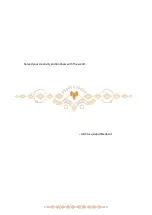
From Within the Gate
Knowing a bit more about why we created Natural Gate and some inner workings may help you to
explore the instrument deeper.
Every module we make starts with a purely musical goal. For Natural Gate, it was to make a module
that created sounds as if they came from our natural world and not the artificial one. Initially turning
to the typical LPG for this, we were not satisfied. They didn’t sound natural enough to us.
So we began by taking a field recorder and various striking objects - sticks, felt mallets, rocks, etc. -
and we began hitting all sorts of things from skinned drums, to sheets of metal, tubes, strings, and all
sorts of things in my woods (I love nature and the outdoors!) - things like trees, the earth (hard
packed clay, grass covered soil, sand), fallen branches, stones, and so forth. Having a library of
envelope shapes to study, we found that short things have different profiles than things that ring
long. Hard on hard, hard on soft, soft on hard all have different responses. And additional
dimensions of how the harmonic content was damped. And not just the objects themselves, but the
environments they were struck in - leaves of trees, grass, etc all damn the resulting sound we hear as
well. How fast you would hit something also affected the resulting shapes and sounds. We studied
all of these parameters and determined the key components of what was making these events
sound natural.
Before continuing on to some of the implementation details, we’ll first discuss the traditional LPG in
order to highlight the differences in our lovely Natural Gate.
As you may know, the common LPG is some hybrid of a filter and VCA simultaneously. 'Opening the
gate' means are you increasing both the high-frequency information that will pass and increasing the
volume at the same time. A coarse analogy is like having a LPF feeding a VCA with the same control
signals. A majority of Natural Gate's loudness, however, is indeed due to the filtering action as
Natural Gate is much more filter than VCA in the hybrid. This balance was carefully adjusted till our
ears were happy.
The signal that opens and closes Natural Gate is generated by some rather elaborate envelope
generator stages. The HIT and CTRL signals are both fed through these EG stages. The HIT input is
crafted specially by us and the CTRL input allows you to feed whatever you like. But both always go
through the EG stages.
The OPEN fader is post EG and will shift the entire envelope up or down. So while the CTRL signal
may sound like it is doing the same thing, they are at different locations in the signal path.
The amplitude of the envelope signal will control both the spectral content and the volume of the
signal at the IN jack. The higher in amplitude the envelope signal, the brighter and louder the input
signal that passes through the gate. As the envelope signal decays, HF information and loudness are
reduced more and more until you can no longer hear the signal.
Humans cannot hear fundamentals past 16-20kHz so opening a filter beyond these frequencies will
naturally have less impact on the sound. By default, with the CTRL attenuator set to zero (green LED
will light) and OPEN slider all the way down, and MATERIAL set to up position, the HIT input will fully
open the gate allowing all frequency content to pass (at least initially, before it begins to quickly,
then gradually, decay). Raising OPEN or adding CTRL will increase both the minimum closure setting
of the gate and the maximum opening (remember, it is an offset). If you raise OPEN (or add CTRL),
you can increase the filter cutoff past the frequencies you can hear... the peak of the envelope




































